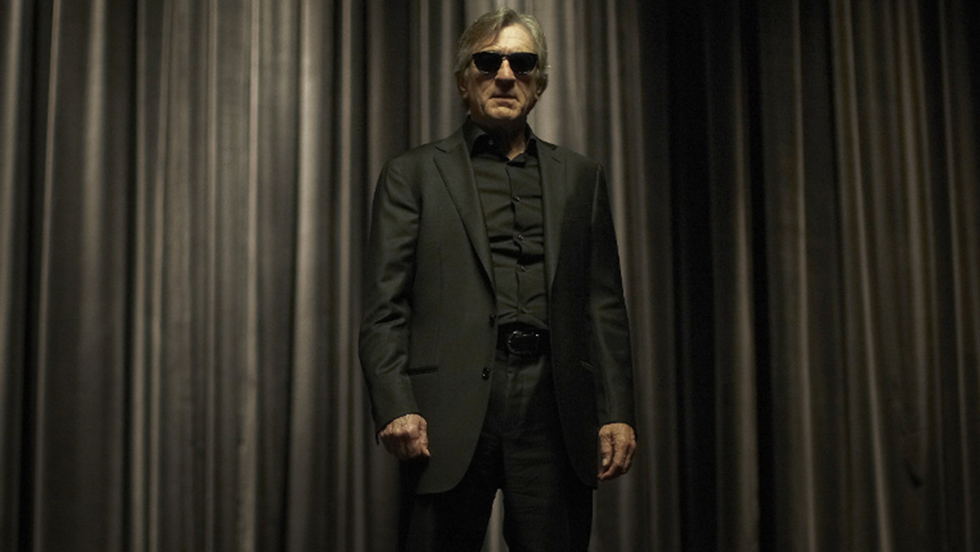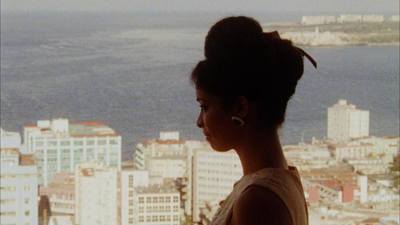
BY KAREN KEMMERLE |
Rodrigo Cortes on Directing De Niro, Weaver, and Murphy in "Red Lights"
Are you a believer or a skeptic? In the follow-up to his 2010 hit “Buried,” Cortés harnesses the talents of an excellent cast to tackle paranormal phenomena, hoaxes, and the human brain.

Do you want to believe? One of the most-anticipated movies at this year’s Sundance Film Festival, Red Lights stars Cillian Murphy, Sigourney Weaver, and Robert De Niro. The film follows two paranormal investigators/college professors, Tom Buckley (Murphy) and his mentor, Dr. Margaret Matheson (Weaver), as they introduce their scientific methods to eager university students and debunk fabricated paranormal claims. When the famed psychic Simon Silver (De Niro) reappears after a 30-year disappearance under mysterious circumstances, Tom and Dr. Matheson, determined to prove him a fraud, enter into the perilous realm of the paranormal, for which neither is fully prepared.
At the helm of Red Lights is Rodrigo Cortés, no stranger to success at the Sundance Film Festival—his debut film Buried was a Sundance sensation. We recently had a chance to sit down with Cortés and discuss such topics as the inspiration for his new film, his writing process, and the components of a successful actor/director relationship.
Tribeca: What inspired you to make Red Lights?
RODRIGO CORTÉS: I have always been interested in paranormal hoaxes, a subject that is comprised of two concepts that people get very passionate about. First, people are fascinated by the paranormal, which is magical and unexplainable, and makes a perfect background for a compelling story. Next, people are interested in hoaxes, which are lies. Isn’t lying what people do best?
On a more serious note, I made Red Lights because I wanted to explore the sources or origins of our beliefs. I guess, in a way, I wanted to explore the mechanisms of the perceptions of the human brain, how it is not a tool you can trust to perceive reality, because it basically lies.
Tribeca: Have you always been fascinated by paranormal phenomena and hoaxes?
RODRIGO CORTÉS: When I was a kid, I was interested in seeing poltergeists or telling horror tales to my friends while we were sitting near a cemetery. It had nothing to do with the topics themselves, but about the mystery of things that cannot be explained by any normal means. I was very interested in the way these themes affect people’s psychologies or beliefs.

Tribeca: The research process for Red Lights must have been fascinating. Can you tell us something about it?
RODRIGO CORTÉS: I did more than a year and a half of research, studying both sides: the Rationalists and the Believers. Both were willing to talk to me. The figure of Simon Silver is not based on anyone, but the skills he has are based on the gifts of certain people that I met while I was doing my research. His particular psychological make-up is totally invented, however. To craft Simon, I also drew from personalities from the Depression Era and certain televangelists.
Tribeca: In the debate between those who adhere to straight science and those who accept the paranormal, which side appeals to you most?
RODRIGO CORTÉS: One thing I did find out while I was studying both sides was that most of them, by the end of the day, behaved in a very similar way. They only accepted what confirmed their previous positions, and they tended to reject everything that put them at risk. That means that we believe what is most convenient for us to believe. They live their lives building theories to prove their beliefs.
Tribeca: Were both communities willing to let you into their worlds? Did you encounter any problems?
RODRIGO CORTÉS: Sure, it was tricky at first, but both groups are pleased with the ending of the film. In a way, the film doesn’t satisfy any position. If you belong to the skeptical side, you think at the beginning of the film that this is your film at last, but as the movie progresses, it betrays those initial ideas and shifts so you can start to see both sides of the argument. It’s a fiction film. It’s not meant to be used as a weapon against any one particular side. The film doesn’t really give you an answer at the end. You just have to accept it as is.
Tribeca: You have a tremendous cast on this project: Cillian Murphy, Sigourney Weaver, Elizabeth Olsen, Toby Jones, and, of course, Robert De Niro. Did you always have this particular group of actors in mind?
RODRIGO CORTÉS: Well, I never write a character with a particular actor in mind. What I do with my characters is try to create this contradictory and complex psychology. Once the script is done, I try to find the best available actor for the role. However, there is an exception to my rule. The second day I was writing the character of Matheson, the face of Sigourney Weaver began to float in front of me. I created this very strong woman with a sense of humor and this warmth that somehow remains intact after all she’s been through. Before I could stop myself, I started writing for her, which is pretty risky. That doesn’t guarantee you a “yes,” but it does guarantee you a serious problem if she says no. Thank God she said yes.

Tribeca: She is such a great actress—it was really nice to see her play such a meaty role. One of the standout scenes in the film is when she is on the TV debate show. It feels like such a throwback to the 1970s political thriller.
RODRIGO CORTÉS: I love to hear that, because that’s what I intended to do. I wanted the film to have the genetic code of a 1970s political thriller. In the case of the TV debate you mentioned, I wanted the audience to feel like it was happening in front of their eyes, as if they are listening to real people, overlapping each other, in a very organic way.
Tribeca: Speaking of great characters, I was really intrigued by Simon Silver, played by De Niro. How did he come into the picture?
RODRIGO CORTÉS: Well, when you go after great actors like Sigourney Weaver and Robert De Niro, getting them is neither easy nor difficult. It just happens fast or doesn’t happen at all. Mr. De Niro had a very strong reaction to the script and the character. When the character of Simon Silver is doing his shows, he is, in a way, constantly defying his audience. He never goes out there to please them. The way he approached them is very peculiar. He asks them: “What did you come here to see? Should I satisfy you or should I entertain you?” That sort of challenge is something you don’t expect. You don’t know if he is talking about himself or if he is threatening Tom (played by Murphy) or if he even knows Tom is there. This multi-layered way of writing is sometimes a challenge for producers, but never a challenge for the actor.
So he responded very strongly to that. I met him in Sicily. I couldn’t have asked for a better place to meet him. [Laughs.] After about 25 minutes of conversation, he was in.
Tribeca: You have a tremendous gift with actors. Ryan Reynolds’ work in Buried was revelatory in that you allowed him to display his range as a dramatic actor. Likewise, I think that the performance you elicited from Cillian Murphy in Red Lights is extraordinary. How you approach the director/actor relationship?
RODRIGO CORTÉS: You have to find the right actor for the role. The magic that happens on screen is, first and foremost, theirs. The director’s role is almost like a bullshit detector. You can’t accept anything other than the truth. In order to get the best from them, you have to make them feel safe. When your actors feel safe, that’s when the truly interesting things happen. From that moment on, they become really brave and you can really harness their magic. You can try and help them along the way, but basically, you just sit back, get comfortable, and applaud.
Tribeca: Could you talk about your next project? Will it be genre-based?
RODRIGO CORTÉS: For me, it’s not about genre. I only believe in two genres: good films and bad films. If I’m being honest, I like examples from both sides. I’m particularly interested in character driven stories. I love action and complex set pieces, but they have to come out of the characters.
I also like films that are meant to be experienced, films that you feel you can touch. My next film could be whatever. Maybe a western, maybe a sci-fi film, or you name it. It’s never about any one particular genre for me.
Red Lights opens this Friday in theaters. For tickets, click here.
![]() Like Red Lights on Facebook.
Like Red Lights on Facebook.

